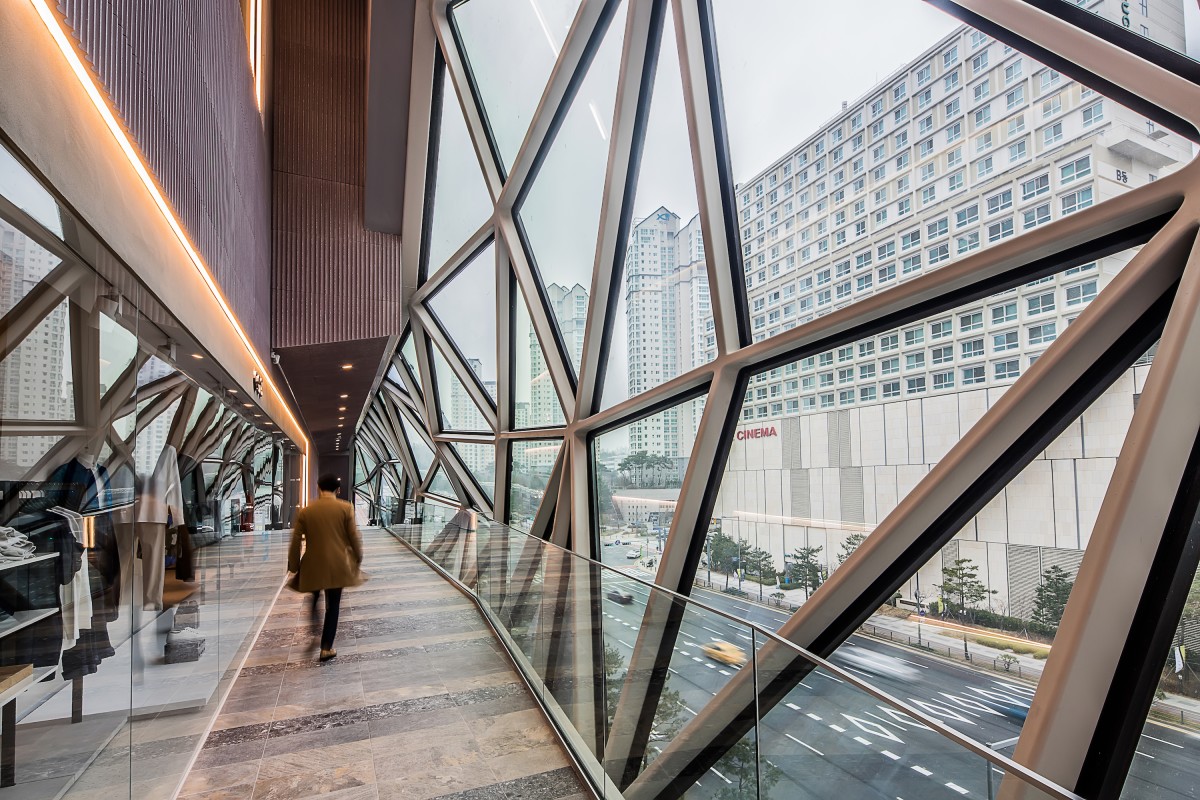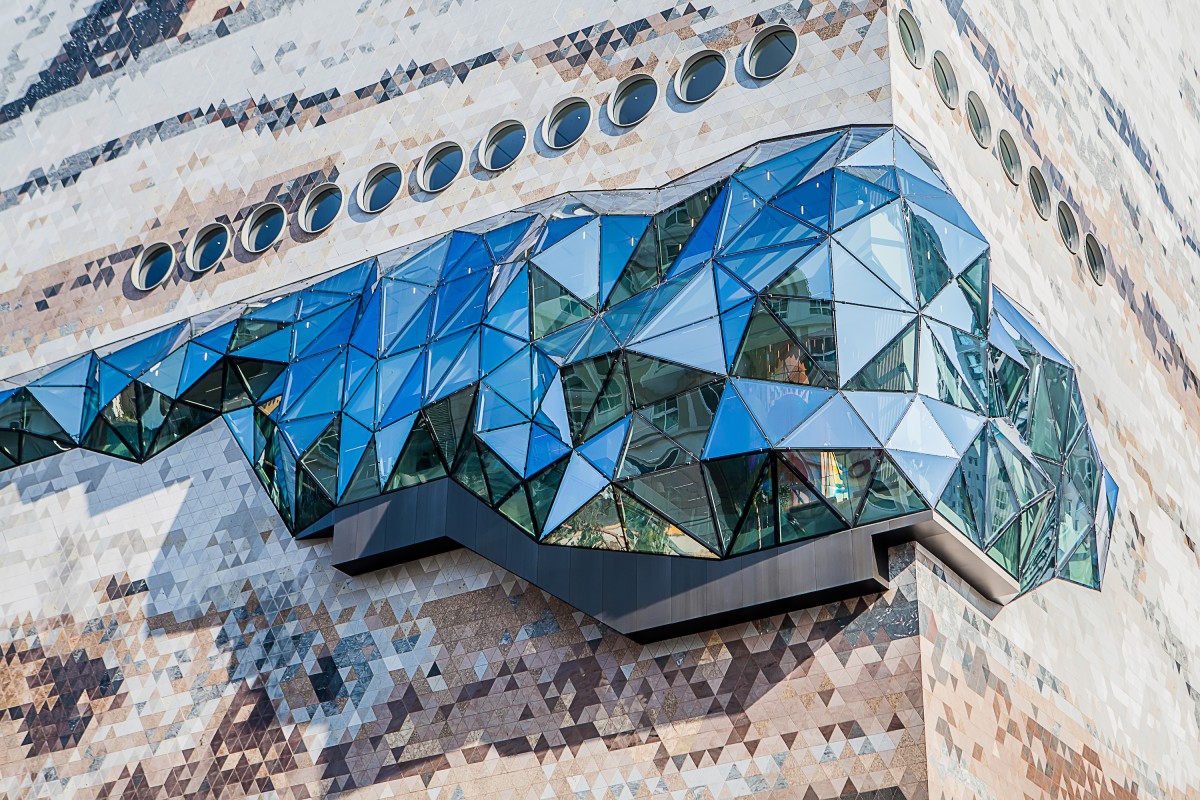With its eye-catching glazing bulging out of a stone facade, the remarkable Galleria in Gwanggyo is one of the most striking buildings we’ve seen in some time. Designed by OMA, the department store is located in Gwanggyo, a town just south of South Korea’s capital Seoul.
Galleria in Gwanggyo was created in collaboration with local firm Gansam and was commissioned back in 2016 and completed earlier this year. The project is located in a burgeoning district that’s dominated by residential skyscrapers and is near a park.

Hong Sung Jun, courtesy of OMA
The 12-story building is finished in a textured mosaic stone facade that makes it look like a huge stone cube. This is partly broken up by small porthole-like windows, but it’s the larger multifaceted glazing that really makes it stand out. This provides light and views inside, as well as hosting walkways which offer access to a rooftop garden.
Inside the store proper, the basement level contains a market and deli, with jewelry stores and men and women’s fashion on the floors above. There’s a kid’s section above that and a sport and leisure section farther up, with a large dining area on the 11th floor and a lounge on the uppermost floor.

Hong Sung Jun, courtesy of OMA
“The Gwanggyo store is the sixth branch of Galleria – Korea’s largest upscale department store franchise founded in the 1970s,” says OMA. “Sculpted as a stone volume with a textured mosaic stone facade, the building evokes the nature of its neighboring Suwon Gwanggyo Lake Park. A public route is excavated from the stone volume and connects the public side walk to a roof garden – to include both retail and cultural activities. It introduces an innovative element to the traditional typology of a department store.”
Source: OMA
Source of Article